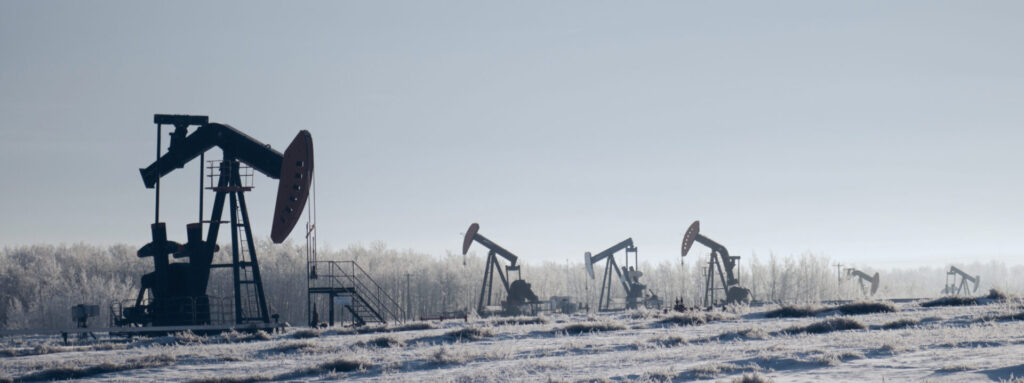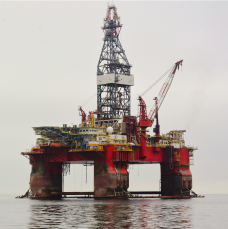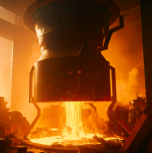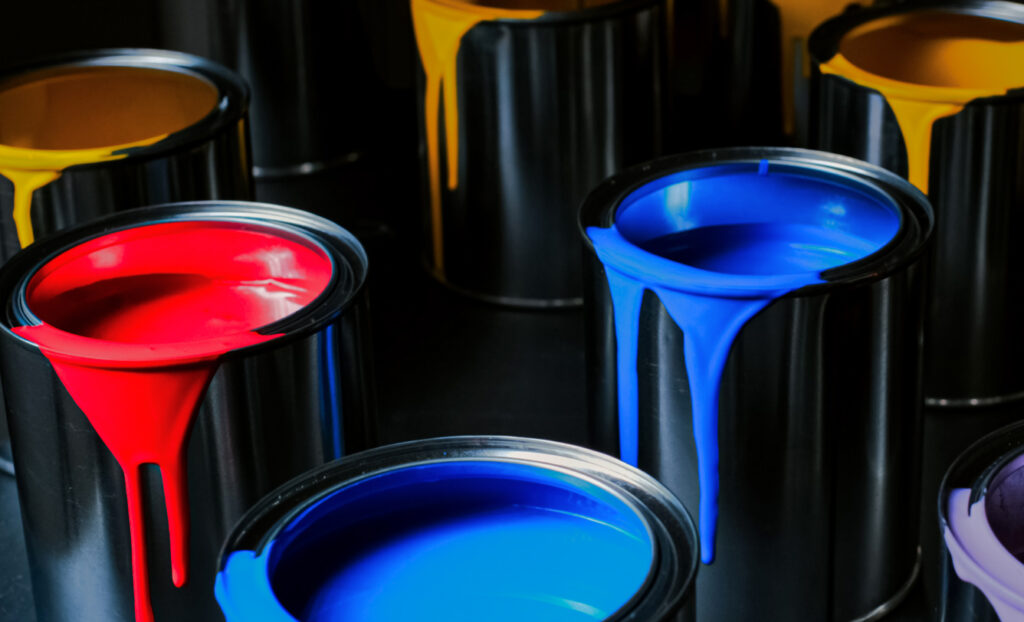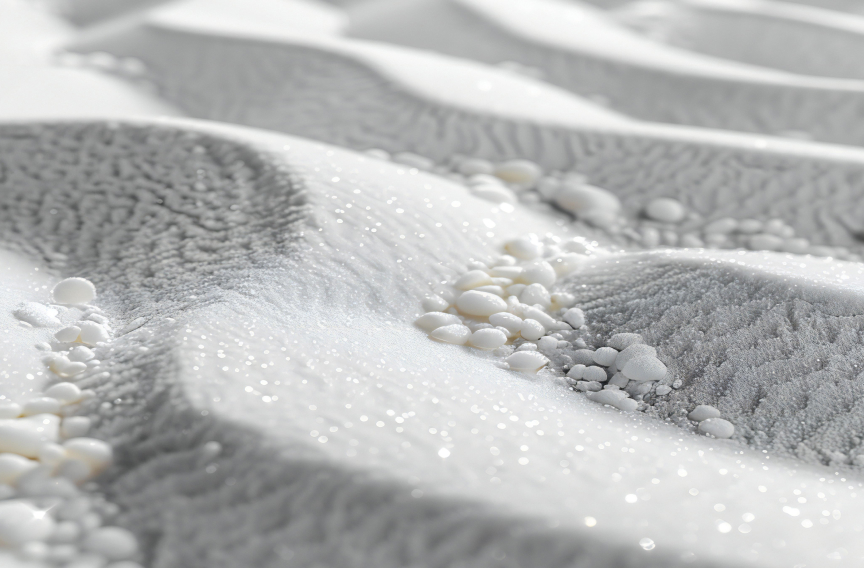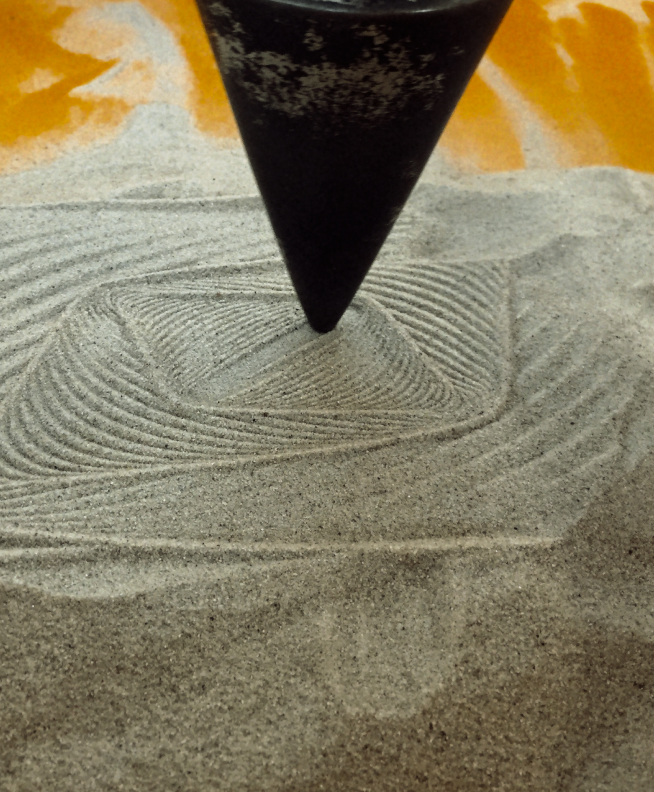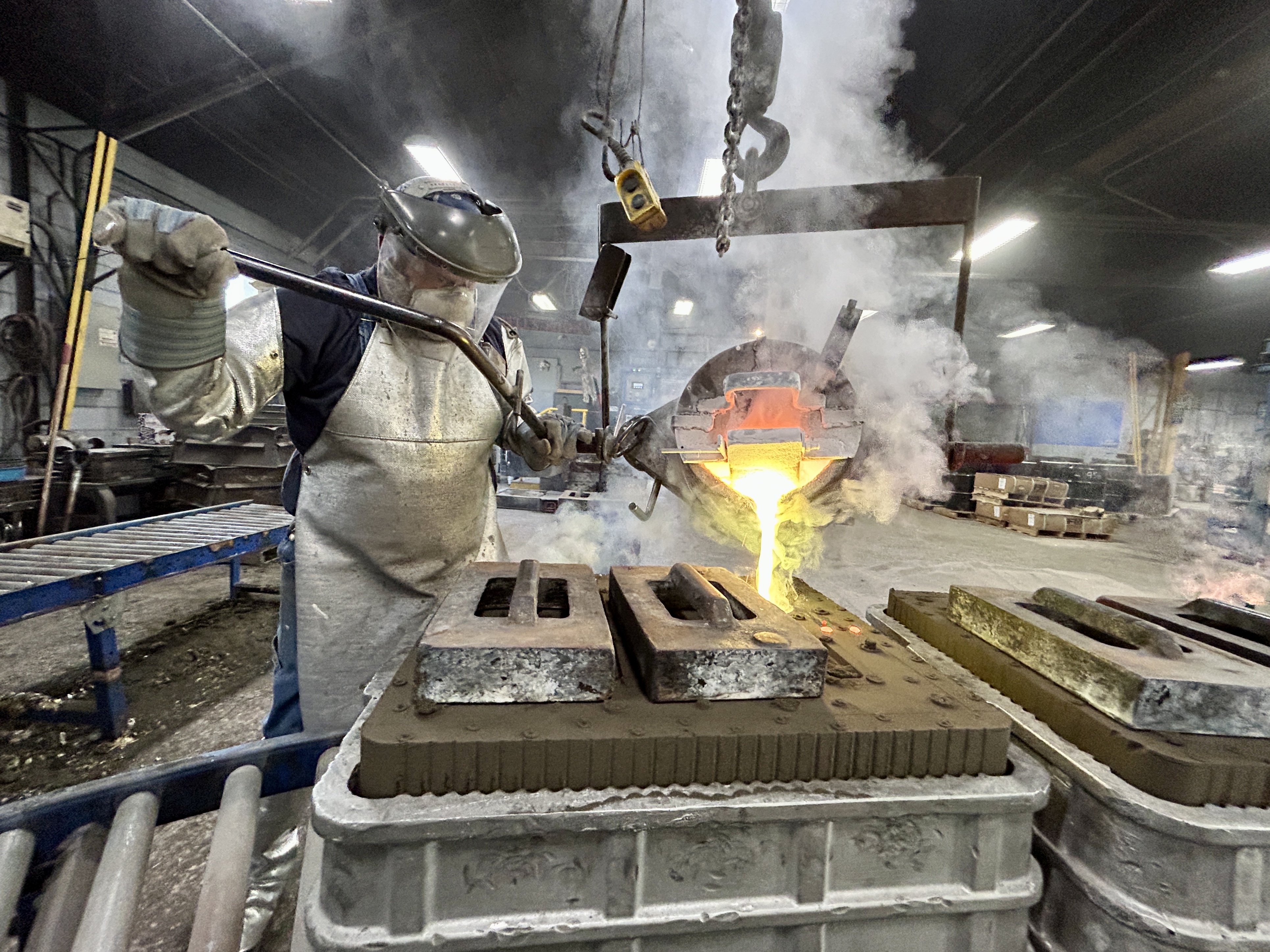Investment casting begins with a basic premise: create a precise ceramic mold around a wax pattern, remove the wax, and fill the resulting cavity with molten metal. While the concept remains straightforward, modern investment casting has evolved into a highly controlled manufacturing process that delivers unprecedented precision for critical components. This evolution reflects the increasing demands of modern industry, where tolerances are measured in microns and surface finish quality can directly impact component performance.
At CARBO Ceramics, our engineering expertise and material science innovation drive continuous advancement in investment casting technology. Through the development of specialized ceramic materials and precision-engineered solutions, we enable manufacturers to achieve superior results while optimizing operational efficiency. Our commitment to research and development ensures that we remain at the forefront of manufacturing technology, delivering solutions that address the evolving needs of modern industry.
The Investment Casting Process
Investment casting requires precise control at every stage, from initial pattern creation through final component finishing. Each phase demands exact specifications and comprehensive monitoring to ensure consistent, high-quality results.
Pattern Creation and Preparation
The foundation of investment casting excellence begins with pattern creation. Modern facilities utilize computer-aided design (CAD) and advanced modeling software to develop precise wax patterns that account for metal shrinkage, tolerance requirements, and complex geometries.
Shell Building Technology
The ceramic shell building process transforms pattern assemblies into molds by applying ceramic slurry and stucco layers. Each layer must meet exact specifications for thickness, density, and surface quality to ensure optimal casting results. The shell building process involves:
Primary Coat Application
The primary coat is the foundation for casting. We apply an initial slurry layer using controlled viscosity and particle size distribution to ensure optimal surface reproduction. Our specialized binding systems develop the necessary green strength for subsequent processing, while maintaining temperature and humidity control during application. Careful handling procedures throughout the primary coat process prevent defects and ensure consistent quality across all components.
Backup Layer Development
Following the primary coat, the next step is to build structural layers that provide the shell’s strength and integrity. Each layer undergoes controlled drying between applications to ensure proper strength development and prevent defect formation.
Advanced Thermal Processing
Controlled dewaxing removes pattern material while maintaining shell integrity. Subsequent firing processes strengthen the ceramic structure and prepare it for metal casting. This phase includes:
Dewaxing
During dewaxing operations, precise temperature control prevents shell cracking while specialized equipment removes pattern material. Wax recovery systems support sustainable manufacturing practices, while environmental controls maintain optimal processing conditions.
Firing Procedures
The firing process further strengthens the ceramic structure through programmed temperature profiles that optimize shell properties. Thermal shock prevention protocols protect shell integrity during temperature transitions, and rigorous quality verification confirms that each shell meets specifications before metal casting begins.
Metal Casting and Solidification
The pouring process requires exact control of metal temperature, flow rate, and environmental conditions. Advanced monitoring systems track necessary parameters throughout solidification, ensuring proper crystal structure formation and preventing casting defects. Important aspects include:
Temperature Management
Maintaining precise temperature control throughout the casting process is necessary for product quality and consistency. Our advanced thermal management systems integrate precise metal temperature control with sophisticated mold preheating capabilities to ensure optimal pouring conditions. Controlled cooling protocols guide the solidification process, promoting proper grain structure and preventing defects.
Flow Control
The controlled introduction of molten metal into the mold cavity produces high-quality castings. Automated pouring systems maintain precise control over metal flow rates, minimizing turbulence and ensuring complete mold filling. Advanced pressure monitoring systems track metal flow dynamics throughout the pouring process, while specialized turbulence prevention features maintain laminar flow conditions. Sophisticated fill verification procedures confirm complete cavity filling and proper solidification patterns, ensuring consistent casting quality.
Component Recovery and Finishing
Shell removal processes preserve casting quality while minimizing finishing requirements. Modern finishing operations combine automated systems with skilled craftsmanship to achieve final dimensional and surface specifications. This includes:
Final Processing
Final processing transforms raw castings into finished components through a series of carefully controlled operations. Our surface finishing involves controlled material removal, shot peening, and surface enhancement techniques. Components then undergo heat treatment processes to develop required mechanical properties, followed by verification to ensure compliance with specifications.
Advanced Materials in Modern Investment Casting
Modern investment casting depends on advanced ceramic materials engineered for performance. These materials provide essential characteristics that ensure casting success:
Thermal Stability
- Resistance to thermal shock during metal pouring.
- Consistent performance at elevated temperatures.
- Controlled thermal expansion characteristics.
- Maintenance of dimensional stability.
- Prevention of premature degradation.
Permeability Control
- Optimized gas evacuation during pouring.
- Prevention of air entrapment.
- Controlled solidification venting.
- Moisture management capabilities.
- Enhanced shell performance.
Strength Characteristics
- Superior mechanical properties at high temperatures.
- Resistance to metal penetration.
- Excellent handling durability.
- Controlled crack resistance.
- Optimal load-bearing capacity.
Surface Properties
- Enhanced finish capabilities.
- Reduced reaction with molten metal.
- Improved release characteristics.
- Consistent surface texture.
- Minimal defect formation.
Applications Across Industries
From aerospace applications demanding unprecedented accuracy to medical devices requiring absolute reliability, investment casting delivers the exacting standards modern industry demands. Our engineered ceramic solutions enhance these capabilities, enabling manufacturers to produce increasingly complex components while maintaining strict quality requirements.
Aerospace Components
Investment casting produces important aerospace components that require exceptional performance characteristics:
Turbine Components
- Complex internal cooling passages.
- Precise airfoil profiles.
- Superior surface finish.
- Dimensional control.
- Enhanced performance characteristics
Structural Elements
- Weight optimization features.
- High-strength requirements.
- Complex geometries.
- Precision tolerances.
- Certified materials.
Medical Device Manufacturing
The medical industry relies on investment casting for producing specialized components:
Surgical Instruments
- Precise operating mechanisms.
- Ergonomic design features.
- Sterilization compatibility.
- Surface finish requirements.
- Material certification needs.
Implant Components
- Biocompatibility requirements.
- Complex geometric features.
- Surface texture control.
- Integration capabilities.
- Performance specifications.
Industrial Applications
Manufacturing operations benefit from investment cast components in various applications:
Turbine Systems
- High-temperature capability.
- Precision blade profiles.
- Internal cooling features.
- Performance optimization.
- Efficiency enhancement.
Pump Components
- Complex flow passages.
- Wear resistance features.
- Pressure capabilities.
- Efficiency design.
- Performance requirements.
Valve Systems
- Precise sealing surfaces.
- Flow control features.
- Pressure capabilities.
- Material requirements.
- Performance specifications.
Advantages of Modern Investment Casting
Investment casting offers distinct advantages that set it apart from traditional manufacturing methods. From achieving complex geometries and superior surface finishes to enabling material flexibility and cost-effective production, each aspect of the process contributes to its unique value in modern manufacturing. These benefits drive investment casting’s role in producing precision components across industries.
Geometric Precision
Investment casting excels in producing complex geometries that would be difficult or impossible to achieve through other manufacturing methods:
Internal Features
- Complex cooling passages.
- Hollow sections.
- Internal threads.
- Hidden cavities.
- Integrated channels.
Wall Thickness Control
- Uniform material distribution.
- Thin-wall capabilities.
- Thickness transitions.
- Structural optimization.
- Weight reduction.
Surface Detail
- Fine feature reproduction.
- Text and marking creation.
- Surface texture control.
- Pattern replication.
- Detail preservation.
Surface Quality
Superior surface finish reduces or eliminates secondary operations, providing significant advantages:
Finish Characteristics
- Minimal roughness.
- Consistent texture.
- Reduced porosity.
- Surface integrity.
- Quality consistency.
Manufacturing Benefits
- Reduced machining requirements.
- Lower production costs.
- Faster throughput.
- Improved efficiency.
- Enhanced quality.
Material Versatility
The process accommodates diverse metal alloys, providing flexibility in material selection:
Alloy Capabilities
- Stainless steel variants.
- Nickel-based superalloys.
- Titanium alloys.
- Aluminum systems.
- Specialty materials.
Performance Options
- High-temperature capability.
- Corrosion resistance.
- Strength optimization.
- Wear resistance.
- Special properties.
Take Your Manufacturing to the Next Level
Investment casting continues evolving through technological advancement and increasing demands for precision, efficiency, and sustainability. As the industry progresses, engineered materials, advanced monitoring systems, and rigorous quality control become increasingly important for maintaining competitive advantage. CARBO’s commitment to innovation and excellence ensures that we remain at the forefront of this evolution, delivering superior solutions that drive manufacturing success.
Contact our team to learn how our advanced ceramic solutions can enhance your investment casting operations and drive manufacturing excellence. Our technical experts are ready to help you optimize your manufacturing processes and achieve superior results through innovative material solutions and complete support services.
Frequently Asked Questions
What is investment casting, and how does it differ from other metal fabrication methods?
Investment casting, also known as the lost wax process, is a precision manufacturing method that creates complex metal components using a ceramic mold formed around a wax pattern. Unlike other fabrication methods such as machining or die casting, investment casting enables the production of intricate geometries with superior surface finish and tight tolerances, often requiring minimal secondary operations.
What types of materials can be used in the investment casting process?
The investment casting process accommodates a wide range of metals, including various grades of steel castings, stainless steel, aluminum alloys, and specialty metals. Material selection depends on specific application requirements such as temperature resistance, strength, and corrosion resistance.
What industries commonly use investment casting?
Investment casting serves diverse industries including aerospace, medical device manufacturing, automotive, and industrial equipment. The process is particularly valuable for applications requiring complex geometries, precise tolerances, and high-performance materials.nsive dust control systems. Workers benefit from significantly reduced risk of silica-related respiratory diseases.
